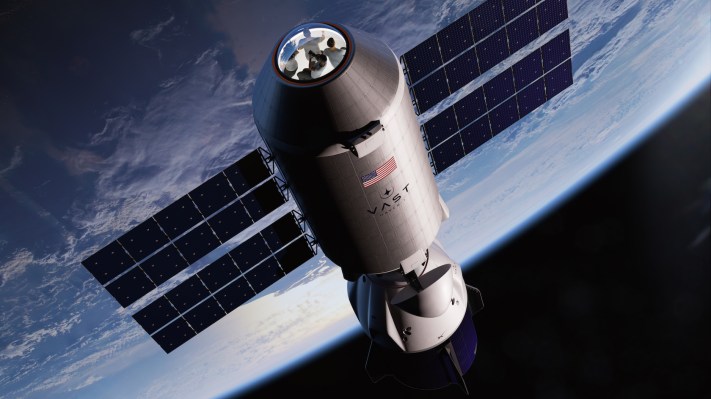Some of the biggest names in the space industry are billionaires: Elon Musk. Jeff Bezos. Richard Branson. The newest person to join this small cadre, at least by personal net worth, is Jed McCaleb. His space station company, Vast, is partnering with SpaceX to be the first private company to launch and operate a fully commercial station in orbit.
The average American is likely unfamiliar with McCaleb, a software developer who was one of the creators of the now-infamous Mt. Gox Bitcoin exchange and a founder of the crypto protocol Ripple. According to some estimates, his fortune is estimated to be worth around $2.5 billion. When Vast emerged from stealth in the fall of 2022, it was greeted with more than a little skepticism. The company said it was launching with a mission to build the world’s first artificial gravity space station — and provided few other details.
“I don’t fault people for being skeptical,” McCaleb said in a recent interview. “I’ve clearly never done anything in aerospace before, so it is a leap.”
The public’s doubts about McCaleb are likely fading fast today, with news that the company is aiming to put the first commercial space station in orbit as soon as August 2025. It’s an aggressive timeline, one that outpaces other station developers — and it’s all being funded by McCaleb himself.
It’s something that makes Vast stand out from its competitors, Vast President Max Haot said. The unique aspect of the company is “Jed and his commitment, and the fact that we not only have a single founder that is our single investor, but that he has the resources and the commitment to see us through this whole flight — both the crew flight and Haven-1 launch — without [needing] any single outside investor.”
The majority of the other space station developers — notably Northrop Grumman and separate teams led by Blue Origin and Voyager Space — are seeking to partly fund their stations via contracts with NASA. Those three initiatives have already garnered a collective $415.6 million to develop their stations. The final major player in this space, Axiom Space, is also working with NASA to attach a module to the International Space Station, with plans to free-fly it once the ISS is decommissioned.
ISS’ decommissioning looms large over all these initiatives. The U.S. government’s commitment earlier this year to continue station operations until 2030 is now the de facto deadline for these private operators — and for NASA itself, which has publicly stated its goal of maintaining a continual presence in low Earth orbit.
Haven-1, as Vast’s first module is being called, was designed for simplicity, McCaleb and Haot explained. The module will launch on a Falcon 9, and a crew of four will follow suit in a SpaceX Crew Dragon capsule. Vast has the option of purchasing an additional four-person crewed launch at a later period. The crew, as well as the ticket price, have not been announced.
Vast is targeting three major customer bases: international space agencies, high net worth private individuals and firms that want to host payloads on the inside or outside of the module. Eventually, Vast is even looking to sell dedicated modules to companies that may want to turn it into an in-space factory or scientific platform, or to individuals or teams.
Haven-1 will have a three-year lifespan. As the company was looking to optimize for simplicity above other considerations, the module will have no resupply or refueling capabilities. The best case scenario, Haot said, is that the module will eventually mate with a second, larger station module that the company wants to launch on SpaceX’s Starship in 2028. If that second launch slips, however, Haot said that Haven-1 will be sent up with enough propellant to deorbit itself at the end of its useful life.
“We’re never going to learn how to do this until we start doing it,” McCaleb said. “SpaceX has shown that if you can move fast and be aggressive, that’s actually a good way to achieve these really great things with hardware.”
